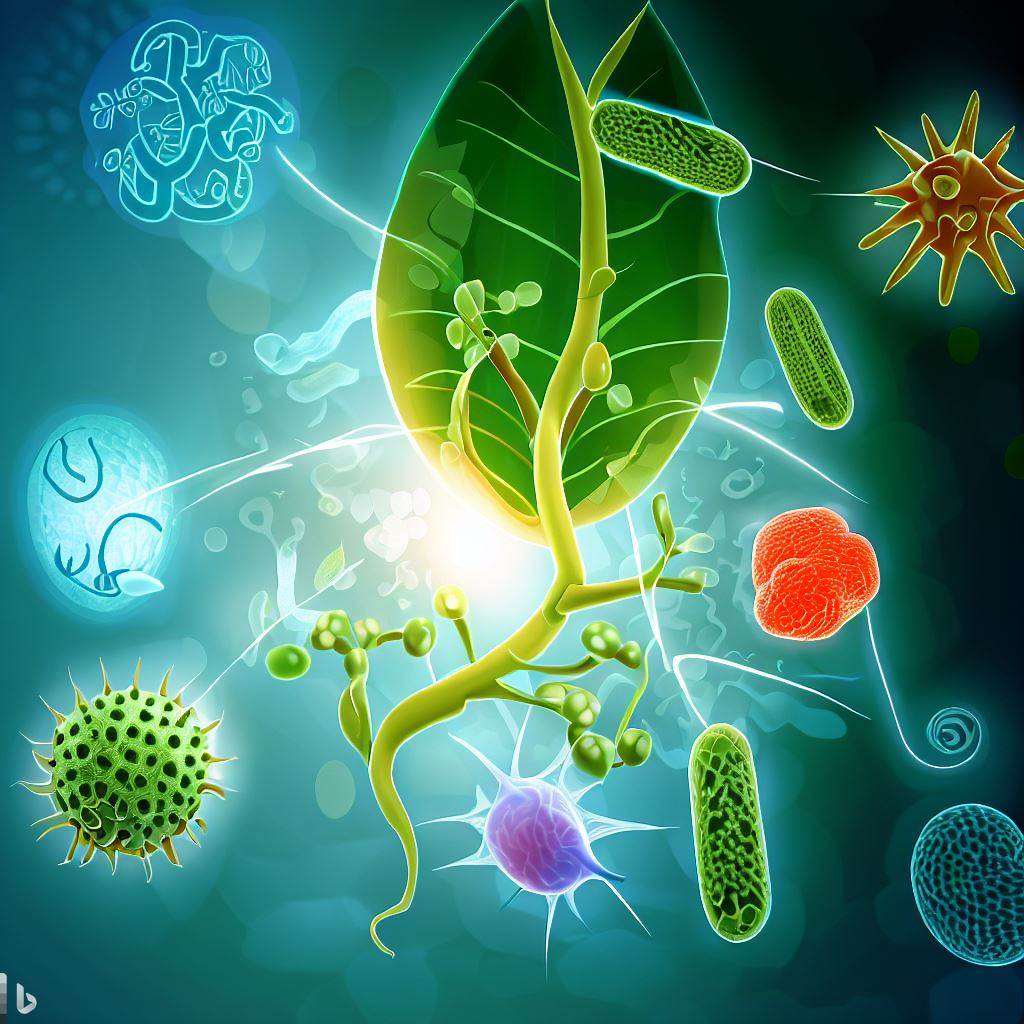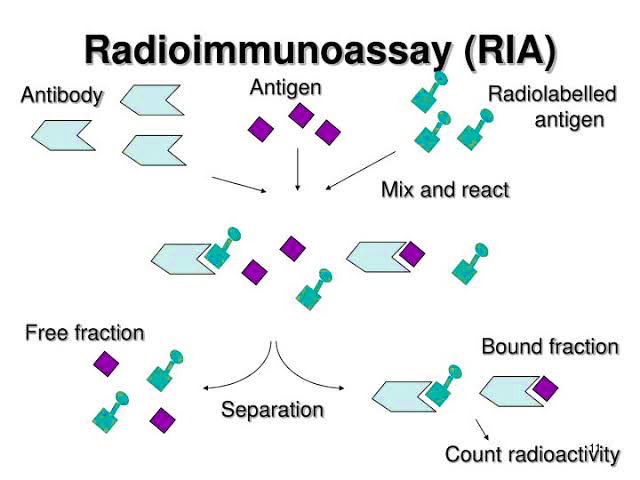-

Immune Response in Plants
Plants, just like animals, have a sophisticated immune system that protects them from pathogens. However, the plant immune response differs from that of animals, as it relies on physical and chemical barriers, as well as specific responses triggered by pathogen detection. The immune response in plants can be classified into basal defense, which is the…
-

Cytokines
Cytokines are vital signaling molecules that play a crucial role in the immune response. This detailed study explores the functions, types, and significance of cytokines in various physiological processes, including inflammation and cell growth. It delves into the two main categories of cytokines: pro-inflammatory and anti-inflammatory cytokines, shedding light on their roles in initiating and…
-

T Cell Maturation
T cell maturation is a critical process in the development of functional T cells, which are key players in the adaptive immune response. Starting in the bone marrow and progressing through the thymus, immature thymocytes undergo positive and negative selection, ensuring the survival of T cells that can recognize foreign antigens while preventing autoimmunity. Upon…
-

Inflammation: a biological response
Inflammation is a complex biological response triggered by the immune system in response to injury, infection, or tissue damage. This study provides insights into the key components and mechanisms of inflammation, including immune cell activation and cytokine release. It explores the two main types of inflammation: acute and chronic, highlighting their characteristics and associations with…
-

Adaptive Immune Response
The adaptive immune response is a powerful defense mechanism that comes into play when the innate immune response falls short in eliminating pathogens. This intricate system involves specific antibodies produced by B cells, which bind to antigens, such as viruses and bacteria, marking them for destruction. Antibodies can neutralize pathogens, impeding their ability to infect…
-

Cells of the Immune System
In this comprehensive study, we delve into the intricate world of immune system cells. Explore the diverse functions and interactions of white blood cells, T cells, B cells, macrophages, dendritic cells, and natural killer cells in safeguarding our bodies against pathogens. Gain insights into the crucial role these cells play in maintaining a strong immune…
-

Organs of the Immune System
In this detailed study, we explore the organs of the immune system and their vital roles in defending against pathogens. From the bone marrow to lymph nodes, discover how these organs facilitate immune responses and maintain overall health. Gain insights into their functions and interconnections for a comprehensive understanding of the immune system’s complexity.
-

Taenia solium
Embark on a detailed study of Taenia solium, the pork tapeworm, and its impact on human health. Explore its morphology, complex life cycle, pathogenesis, and clinical manifestations. Gain insights into effective treatments and preventive measures against this parasitic infection.
-

RIA (Radioimmunoassay)
Discover the powerful technique of Radioimmunoassay (RIA) used in immunological and biomedical research. Explore the principles, types, reagents, and procedure involved in RIA. Uncover the advantages of its sensitivity, specificity, and versatility, while acknowledging limitations such as radiation hazards. Delve into the wide-ranging applications of RIA in medical research, diagnostics, and environmental monitoring. Embrace RIA…
-

Immunoprecipitation
Immunoprecipitation (IP) is a powerful technique used to isolate and purify specific proteins or protein complexes from complex mixtures. Learn about the types, procedure, advantages, and applications of this technique in protein research and analysis. Discover how IP can help in studying protein-protein interactions, signaling pathways, post-translational modifications, and disease-related proteins.
-

ELISA
ELISA, or Enzyme-Linked Immunosorbent Assay, is a widely used technique for detecting and quantifying proteins and antibodies in research and diagnostics. This excerpt provides an overview of ELISA, including its types, procedure, advantages, limitations, and applications in various fields. Explore the power of ELISA in protein and antibody detection for a wide range of scientific…
-

Pathogen Recognition and Innate Immunity
The excerpt delves into the crucial topics of pathogen recognition and innate immunity. It highlights the significance of the innate immune system as the first line of defense against invading pathogens, explaining the role of pathogen recognition receptors (PRRs) in detecting unique pathogen structures known as pathogen-associated molecular patterns (PAMPs). The innate immune response’s rapid…
-

Complement system
The complement system is a complex network of proteins that enhances the ability of the immune system to clear pathogens from an organism. This study note provides a detailed overview of the complement system, including its activation pathways, functions, and regulation, and highlights its significance in immunology and disease treatment.
-

Pathways of Complement activation
The complement system is a crucial component of the immune response, consisting of a cascade of proteins that work together to identify and eliminate pathogens. There are three main pathways of complement activation: the classical pathway, the alternative pathway, and the lectin pathway. Each pathway is initiated by different triggers and involves unique mechanisms of…
-

Functions of Complement system
The complement system is a critical component of the innate immune system that plays a vital role in recognizing and eliminating invading pathogens. Composed of more than 30 plasma proteins, the complement system is activated through several different pathways and exerts its effector functions through various mechanisms. These functions include opsonization, recruitment of inflammatory cells,…
-

Classical pathway of Complement system
Diagram illustrating the classical pathway of the complement system, with labeled steps including initiation, activation of C1, formation of C3 convertase, amplification of the complement cascade, and formation of membrane attack complex (MAC).
-

Functions of Antibodies
This text provides an overview of the critical functions of antibodies, also known as immunoglobulins, in the immune response. Antibodies are a class of proteins that play a vital role in protecting the body from infection and disease. They are produced by B-lymphocytes and can bind specifically to a wide variety of antigens. Antibodies are…
-

Types of Antibodies
This text provides an overview of the five main classes of antibodies and their distinct properties and functions. Antibodies, also known as immunoglobulins, are proteins produced by B-lymphocytes that play a critical role in the immune response by specifically binding to antigens. The five classes of antibodies are IgG, IgM, IgA, IgD, and IgE. IgG…
-

Structure of Antibodies
The text provides an overview of the structure of antibodies. It explains that antibodies are a class of proteins produced by B-lymphocytes that specifically bind to antigens. The basic structure of antibodies consists of four polypeptide chains – two heavy chains and two light chains. The variable domains of the heavy and light chains form…
-

Antigen-Antibody Reaction
The text above provides an overview of antigen-antibody reactions, which play a crucial role in the immune response. It explains the specific binding of an antigen to an antibody through non-covalent bonds and the diversity of antibodies generated by the immune system. The mechanisms of action resulting from antigen-antibody reactions are also discussed, including neutralization,…
-

Antibodies
This text provides an overview of antibodies, also known as immunoglobulins (Ig), which are proteins produced by the immune system in response to foreign antigens. Antibodies are highly specific to a particular antigen and play a crucial role in fighting infections and diseases. The text covers the structure and different classes of antibodies, their mechanisms…
-

Antigen
This text provides an overview of antigens, which are molecules capable of inducing a specific immune response. It explains the two main types of antigens, their structure and characteristics, antigen processing and presentation, and how they are recognized by the immune system.
-

Antigen Presenting Cells
This text provides an overview of antigen presenting cells (APCs), including dendritic cells, macrophages, and B cells, and their crucial role in initiating the adaptive immune response. It also discusses the process of maturation of APCs, which enhances their efficiency in presenting antigens to T cells.
-

The pancreas gland
The pancreas, situated behind the stomach in the upper abdomen, plays a crucial role in glucose metabolism regulation. It produces insulin and glucagon, which control blood sugar levels. Dysfunction of the pancreas can lead to conditions like diabetes mellitus and pancreatitis, necessitating accurate diagnosis and treatment. Understanding the pancreas’ significance helps comprehend its impact on…
-

Humoral Immune Response
The humoral immune response, also known as antibody-mediated immunity, is one of the two branches of the adaptive immune response. It involves the production of antibodies, also known as immunoglobulins (Ig), by B cells in response to an antigen. The purpose of the humoral immune response is to neutralize and remove antigens from the body.…
-

Insulin Signaling
The Insulin Signaling Study Notes explain the complex process of how the hormone insulin regulates glucose metabolism in cells. The notes cover the interaction of insulin with its receptors, downstream signaling pathways, insulin resistance, and the significance of understanding insulin signaling in various diseases. These notes are essential for students studying physiology, biochemistry, and endocrinology,…
-

Leishmania donovani
Leishmania donovani is a parasitic protozoan responsible for visceral leishmaniasis, a severe and deadly disease. Explore its morphology, life cycle, pathogenesis, and clinical manifestations in this comprehensive study. Understanding this parasite is crucial for effective treatment and prevention strategies.
-

Plasmodium falciparum
Dive into a detailed study on Plasmodium falciparum, the deadliest malaria parasite. Explore its morphology, complex life cycle, pathogenesis, and clinical manifestations. Gain insights into this global health threat to enhance treatment and prevention strategies.
-

Types of ELISA
Delve into the world of ELISA methods for precise antigen and antibody detection. Uncover the procedures and explore their diverse applications in the field of diagnostics. Learn about direct, indirect, and sandwich ELISA, and how they contribute to accurate detection and analysis in various scientific disciplines.
Categories
- Anatomy (9)
- Animal Form and Functions (38)
- Animal Physiology (65)
- Biochemistry (33)
- Biophysics (25)
- Biotechnology (52)
- Botany (42)
- Plant morphology (6)
- Plant Physiology (26)
- Cell Biology (107)
- Cell Cycle (14)
- Cell Signaling (21)
- Chemistry (9)
- Developmental Biology (36)
- Fertilization (13)
- Ecology (5)
- Embryology (17)
- Endocrinology (10)
- Environmental biology (3)
- Genetics (59)
- DNA (27)
- Inheritance (13)
- Histology (3)
- Hormone (3)
- Immunology (29)
- life science (76)
- Material science (8)
- Microbiology (18)
- Virus (8)
- Microscopy (18)
- Molecular Biology (113)
- parasitology (6)
- Physics (3)
- Physiology (11)
- Plant biology (26)
- Uncategorized (7)
- Zoology (112)
- Classification (6)
- Invertebrate (7)




